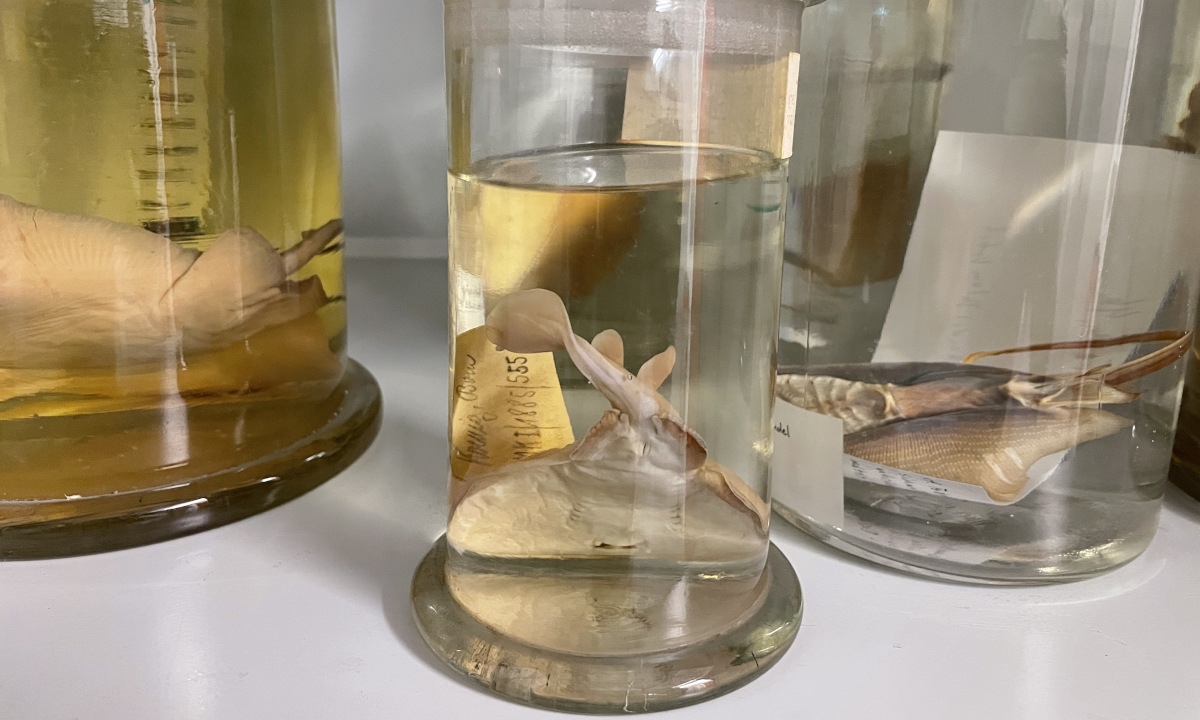Our treasure of the month: the common torpedo is electrified
The common torpedo collected by Alexander Koenig in 1885. ©LIB, Miesen
It shocks with up to 200 volts: the common torpedo or eyed electric ray is able to emit short electric shocks when catching prey or defending itself. Our treasure of the month from the fish collection of the LIB in Bonn goes back to Alexander Koenig.
Due to its electric organ (electroplax), which consists of transformed muscles, this at first glance rather inconspicuous cartilaginous fish is able to generate strong electric shocks. This enables the common torpedo to stun prey or repel predators. Anyone who has approached this fish in the wild, either intentionally or unintentionally, will not forget it easily, because the electric shocks are strong and can even lead to unconsciousness under certain circumstances.
Electric rays are common in all temperate and tropical seas down to a depth of 250 metres. Our treasure of the month, which is now called a torpedo torpedo, originates from the Mediterranean Sea. It was caught and conserved there in 1885 by Alexander Koenig himself in the Gulf of Naples, Italy. Now 137 years old, our common torpedo is a good example of the good preservation of specimens in ethanol. Apart from the minimally lighter colouration, there is barely any difference to the living animal.
©LIB, Miesen
Probably representatives of this species were already mentioned in antiquity by Plato and used by doctors to treat various diseases. Even painted ceramics from ancient Greece depict electric rays among other marine creatures.
The LIB’s extensive collection in Hamburg of sharks and rays (Elasmobranchii), which is one of the most important in Europe with over 2,600 series, is particularly outstanding.




